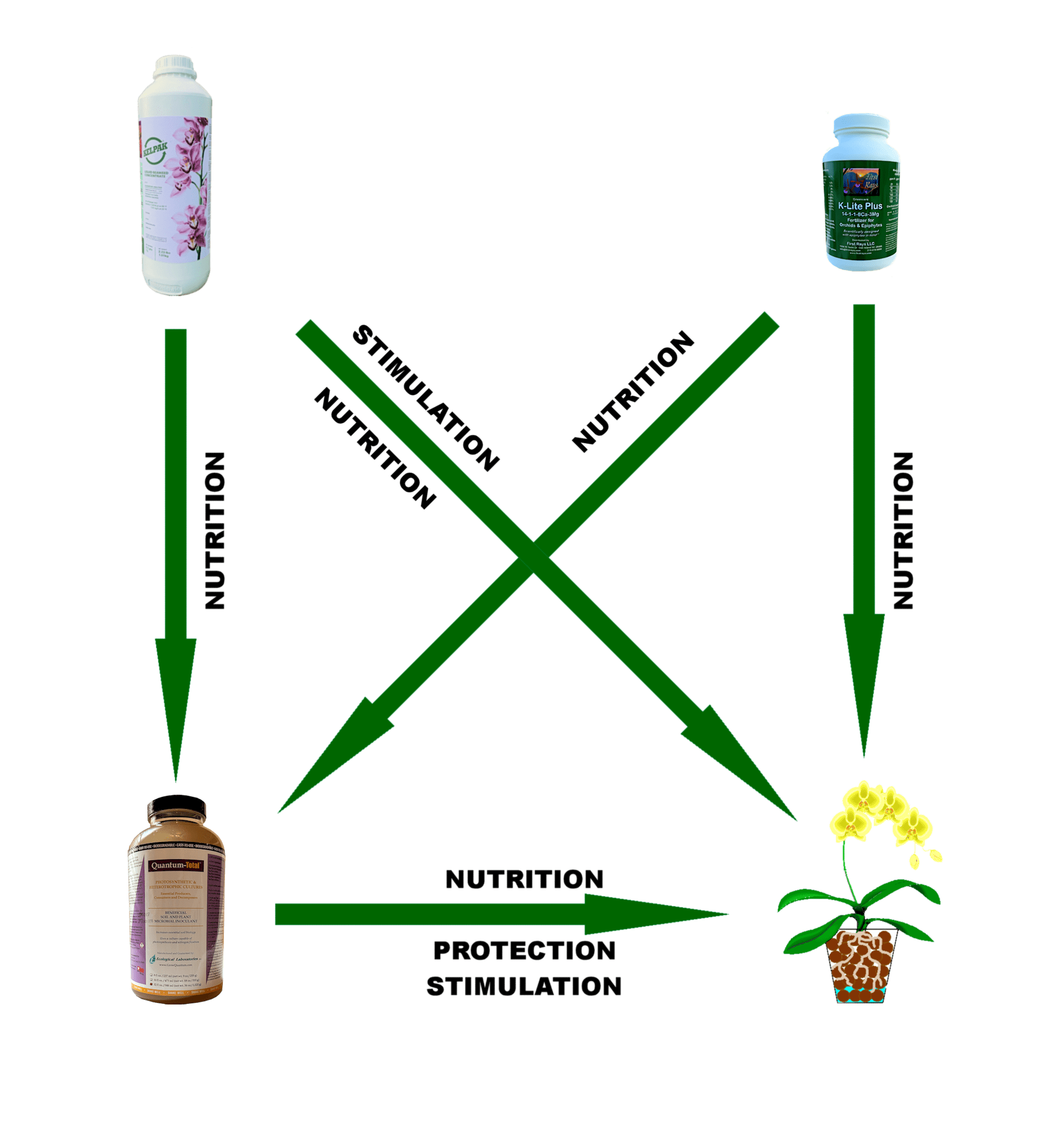If you want to get the best growth and flowering out of your orchids, you need to understand the factors that benefit them in nature.

WATER comes from rainfall, fog, and dew. In all cases it is very pure, and as orchids have evolved with those sources, it should be of no surprise that they do best if pure water is used to irrigate them. Frequent, heavy rains and dense fog means that there is always a plentiful supply when the plant is growing and serves to aerate and flush the root zone.

AIR movement refreshes the atmosphere around the plant and root system where much of the plants’ respiratory gas exchange processes occur, helps keep pathogens from settling and dries out pockets of water that may become ideal incubators for their growth and subsequent infections.

LIGHT drives photosynthesis but must be the right intensity for each plant. Too little and they won’t grow or bloom well. Too much can cause overheating or burning, while prolonged periods can stress the plant by “over-driving” some biochemical processes, while preventing others.

NUTRITION is not a high-demand requirement of orchids, but it is critical for proper growth and flowering, and comes from a wide variety of sources in nature. As this is the most variable, but least understood factor, we’ll address that in more detail.
Most understand that orchids and other epiphytes in nature get their nutrition primarily from the dust, animal droppings, and host-plant exudates that wash down on them from the forest canopy when it rains. Based upon their chemical analyses and tissue studies, we formulate fertilizers that will provide those same mineral nutrients in similar ratios. While such an approach may be quite good, it ignores the broad, beneficial impacts that microorganisms have on the plants, both mechanical and chemical.
In addition to decomposing the collected detritus that might otherwise suffocate roots in nature, beneficial bacteria protect the plants by competing with pathogenic bacteria and exuding antibiotics that kill pathogens. As the bacteria grow and multiply, they secrete nutrients, amino acids, vitamins, and plant growth stimulating hormones into the root zone.
Beneficial fungi also compete with others and secrete antibiotics, nutrients and stimulants, but have the additional benefit of actively killing pathogens, consuming them and converting them into nutrients that plants can absorb. Besides those, the colonization of the epiphytes’ root systems by those beneficial fungi offers the plants other, significant advantages.
Fungi extend hyphae – analogous to roots on a plant – throughout the root zone and broadly on the host tree surface, and mycorrhizae penetrate directly into plants’ root cells. The hyphae network absorbs water and nutrients and the fungi “pump” them directly into the plant via the mycorrhizae, substantially “extending the reach” of the plants’ root systems, enabling uptake from a much larger area. The fungal colony magnifies the normal root function and is particularly good at absorbing and transferring trace elements, helping complete the plants’ nutrient needs. Additionally, hyphae can trap high levels of dissolved solids, reducing stress on the plants.
Unfortunately, the indigenous beneficial microorganisms tend to be incompatible with our cultural conditions, so their populations soon die out.
So how do we mimic, yet improve on those natural phenomena? The answer lies in the proper selection and use of fertilizers and additives.

K-LITE PLUS ORCHID/EPIPHYTE FERTILIZER addresses the mineral nutrition needs of the plants with a low-potassium and phosphorus formula that was designed to mimic yet improve upon the plants’ natural food supply. It was formulated by plant nutrition specialists based upon chemical analyses of rains cascading through tropical forest canopies as well as plant tissue analyses and has proven itself in years of evaluation.

KELPAK SUPERIOR PLANT GROWTH STIMULANT is a natural treatment that enhances root growth and branching, shoot growth, and the formation of lateral growth fronts in sympodial plants, replacing the trace nutrients, proteins, carbohydrates, amino acids, vitamins, and other plant growth regulators not found in any fertilizer. When used routinely, plants will grow better root systems and be more robust in general, and when applied at repotting, re-establishment is accelerated.

QUANTUM-TOTAL PLANT PROBIOTIC is an engineered probiotic formulation that contains multiple consortia of live, beneficial microbes that contribute many of the same functions and benefits as those existing in the wild. Containing multiple species, the protective and curative effects are quite comprehensive. With regular use, plants will grow stronger, be more productive, and experience fewer diseases. Treated ex-flask seedlings will show much better survival rates, and when applied at repotting, re-establishment is faster and stress-free.
SYNERGIES abound when using these products:
- K-Lite Plus is a complete, precisely balanced mineral nutrient package for your plants, promoting growth and flowering, and extensive but supple root cell growth that is easier for microorganisms to colonize, while feeding them to promote growth.
- Kelpak stimulates roots, plant growth, flowering and replication, provides nutrients not found in fertilizers, and feeds the beneficial microorganisms, promoting colony growth and reproduction.
- Quantum-Total inoculates the plants and potting media, creating an extensive network that protects them from diseases while pumping water and nutrients directly into them, magnifying the effectiveness of the root system and efficiency of nutrient uptake. The photosynthetic species in the formulation provide extra chemical “building blocks” to the plants, allowing for faster growth.
- Together, they will give you more robust, disease-free plants that grow, bloom, and multiply better than ever!
